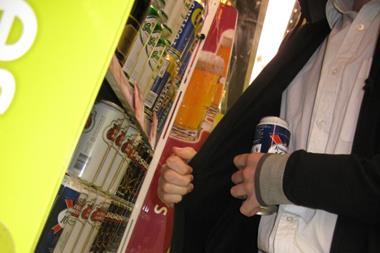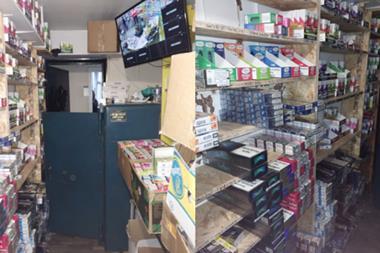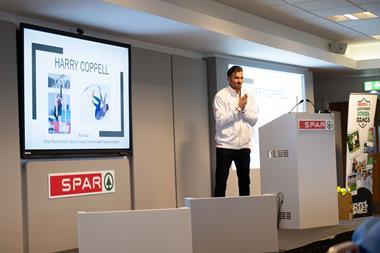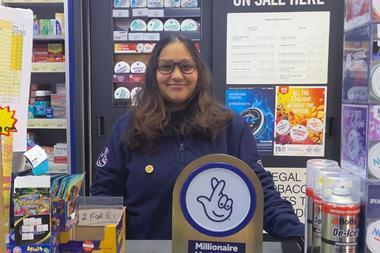Police cutbacks and rising crime mean it’s vital retailers provide clear evidence of crimes they report. Here’s how to present a watertight case
The odd bottle of wine here, pack of bacon there. Shop theft is a persistent pain for small stores, creating one big headache in lost man hours and profit. According to the Association of Convenience Stores’ Crime Report 2015, shop theft cost the convenience sector an estimated £35m in 2014 - that’s the equivalent of 4,219 jobs.
The ACS report showed that 24% of those who took part in its survey had seen more shop theft in 2014 compared with the year before, but one of the most worrying findings is what retailers believe is the motive for crime to be: 59% thought the crimes were premeditated and preplanned and committed by an individual acting alone, not an opportunistic strike. This could mean the thief has done a recce of your store, assessed your security and decided they can get away with it. It may also suggest that the justice system isn’t acting as a strong enough deterrent to put them off having a go.
Retailer Clive Sheppard, who owns eight Spar stores under the Chartman Group in the South West of England, agrees that the low rate of prosecution for shop crime isn’t helping. “In practice, the number of successful prosecutions are a very small percentage. The court system is under pressure and there are long delays in taking cases to prosecution,” he says.
The situation looks like it will only get worse, too, as police forces are facing at minimum of a 5% cut in their budgets in 2015/16 and the number of UK police officers is at its lowest level since 2001.
Clive acknowledges that this means it is more important than ever for retailers to ensure the evidence they provide the police is strong enough to ensure a conviction. “The onus is more on retailers to provide the evidence rather than police coming to find it,” he says.
Samantha Coldbeck, who runs Premier Wharfedale Stores in Hull with her husband Mark, says that they have definitely “taken the ball into our own court” when it comes to presenting evidence to the police.
“We’re a lot more proactive about reporting crime. We report everything and are always pushing the police. People realise we are so hot on shoplifting that they avoid us like the plague.”
When it comes to reporting crime accurately and efficiently, Samantha may have an added advantage over other retailers. “I used to be a special constable so have lots of experience in statement writing and reporting incidents,” she reveals.
She is so adept that instead of waiting for the police to come to them once a crime has been committed, they take their written statements and CCTV evidence straight to the police. “That way it’s dealt with immediately and we’re not having to wait for an appointment that could take ages,” she points out.
At the station an officer simply signs the statement off and gives her a handover slip and evidence label. Samantha says Humberside Police are grateful for her approach as it saves police time. She adds: “We don’t need the standard two-hour slot for statement writing.”
She encourages retailers to report every crime. “If we don’t, figures will show that crime rates are down and even less resources will be put into fighting retail crime.”
Samantha acknowledges this approach does take up man hours, but says it gets results. “We take reporting seriously and have had some really good results, with shoplifters either being sentenced or paying back what they owe us through their benefits.”
Clive is as equally hot on reporting crime, but has found a lack of consistency among forces in dealing with evidence. With stores spanning several police borders he has experienced differing approaches, with one force having to send CCTV footage elsewhere as their systems weren’t compatible.
When Clive wants to provide a witness statement he has to make an appointment for the police to visit him. He acknowledges that it is a job that takes up police time, and is where having a good relationship with his police community support officer comes in. “It’s crucial to cultivate a relationship with them. We are all part of the community and need to work together,” he says.
Some forces are working with retailers to make giving statements easier; South Yorkshire Police provides a downloadable crime investigation pack to stores in its area, which retailers can fill in themselves and return to the police station.
Palmer & Harvey’s loss prevention consultancy Discovery Risk Solutions has created a smartphone app to help retailers report crime.
The app allows store owners to log an incidence of theft, burglary or fraud using their smartphones, which instantly push a notification of the incident out to other users.
Director Derek Bruder explains: “With reduced police numbers, there is already a huge vacuum in the reporting and investigation of so-called low-level crime. Police forces are interested in looking at new ways to deal with crime, and if we as an industry can use something which is added value, why wouldn’t they engage with it?”
Caught on camera
CCTV is playing an increasingly important role in reporting crime, with improving technology ensuring a crime caught on camera provides irrefutable evidence.
Chris Connor, retail business development manager for AD Network Video, says he has certainly see an increase in systems that have facial recognition and which offer evidential quality. “The older systems tended to be reactionary products. Retailers would have to spend hours reviewing footage of grainy images that were no good for identifying a culprit. Today’s CCTV has moved away from analytic to high-definition systems to ensure quality.”
The Home Office provides retailers with guidance on how to get the most of their systems. It recommends having a system that can save images for review at a later date, with information kept secure for a minimum of 14 days.
One of the biggest failings of CCTV, it says, is having image sizes that are too small to enable identification. At least one camera must provide identifiable quality images with a person at 100% screen height. This is best placed near the door and near the till to capture pictures of everyone entering, providing a clear image of their faces plus characteristics of clothing and items being carried.
This needs to be backed up by other cameras; those that can provide a clear enough picture that viewers can say with a high degree of certainty that the individual is the same as before (50% screen height, to recognise); and those that provide just enough detail such as distinctive clothing (25% screen height, to observe).
It recommends making sure the video signal is recorded at a minimum of six frames per second for covering high-risk areas, and a minimum of two frames per second at lower risk areas.
As well as choosing the best locations for cameras, store owners need to check that the angle of view and lighting conditions are adequate.
Samantha and Mark Coldbeck operate a digital system at their store, with 16 cameras that record to a hard drive. Mark was an alarm engineer specialising in CCTV before running the store and upgrading the system was one of the first things he did when joining the business. “We went for a really high-tech system and it is crystal clear, in colour and HD. It was put in in 1996 and we upgraded it in 2009. Every 10 years we’ll look at overhauling or upgrading it,” Samantha explains.
When she has to provide footage to the police she ensures she saves it to CD rather than SD card – “it’s cheaper as we don’t always get the SD cards back”.
Clive says he, too, keeps a close eye on security technology to ensure his is always fit for purpose. “Technology is getting better all the time and we keep a close eye on it to ensure we don’t fall behind,” he says.
With retailers doing their bit to deter criminals and help the police, all that is needed now is for tougher sentencing to ensure when cases do go to court the perpetrators get what they deserve.
CCTV
Invest in quality to get the best results
Small stores could end up paying the price of failing to invest in quality systems, warns Chris Connor, retail business development manager at AD Network Video.
“The past has seen an influx of cheap imports from China and retailers are finding that they are having to buy twice. They make the mistake of buying a system and installing it and forgetting about it. They need to work with a trusted partner that will provide a system that will evolve and which will suit their needs.”
He also sounds a note of caution about screens in which customers can see themselves being filmed if systems aren’t up to scratch – they may work to the advantage of those with shoplifting on their minds. “The criminals can spot any grainy images and can work out areas that cameras may not cover,” he points out.
To get the best out of any CCTV system, Connor advises store owners to ensure their systems undergo at least one maintenance check a year, checking the feed quality is good, cameras are synced and lenses are wiped.
And for those looking to upgrade their systems take a look at video analytics, he suggests, where software patterns can be overlaid on CCTV footage to trigger alarms when sweetheart or void sales are detected.
For more information, go to www.ad-networkvideo.com.
How to be kept informed
Keeping track of a crime once you have reported it is another frustrating element of dealing with retail crime, but is one area which is being worked on by forces across the country.
Earlier this year the then victims’ minister Mike Penning unveiled the online service TrackMyCrime, developed by Avon and Somerset Constabulary. It is an online service designed to keep victims updated on the progress of their case. Officers and victims can securely exchange messages with one another at any time, and police can regularly update victims on the progress of the case.
The scheme is in operation by Avon and Somerset, Kent, South Yorkshire, Northampton and Nottingham police forces, with more expected to adopt the TrackMyCrime service later this year.
































No comments yet